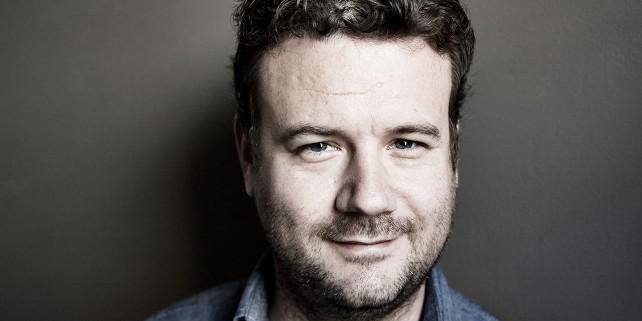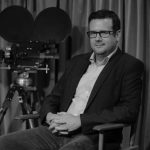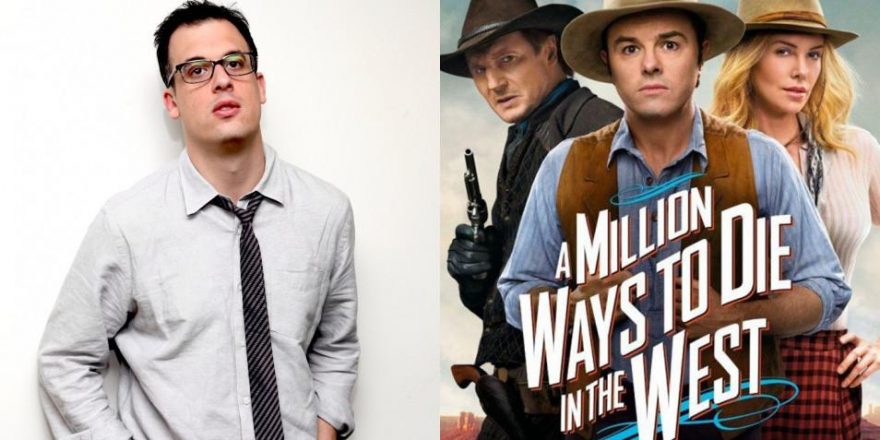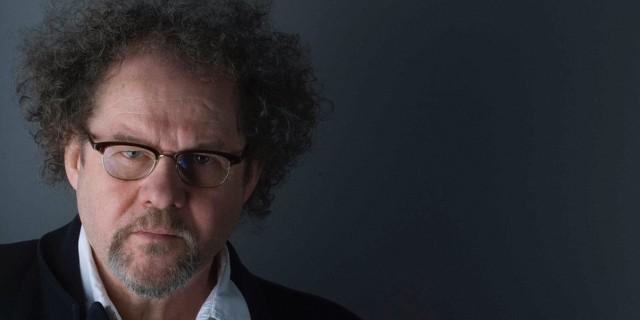When I read that A Million Ways to Die in the West was underperforming at the box office, my heart sank. Not because I liked the film (though I did), but because I knew its failure was one more weapon in the arsenal of those who insist on proclaiming the Western genre extinct. Even before the movie opened, I was convinced of one thing: if it was successful, it would only be thought of as a comedy, but if it flopped, people would point to its status as a Western as a key reason for its downfall. That’s because for as long as I’ve been making movies – hell, for as long as I’ve been alive – there’s been one assumption that has gone virtually unchallenged and unchanged among both those who finance films and those who write about them: the Western is dead.
Most people seem to date the demise of the genre somewhere around the late 1960s, when Sam Peckinpah and Sergio Leone reinvented the form so radically that it was thought to be permanently demolished – never mind that there were dozens of brilliant Westerns in the ’70s, a decade that also saw the rise of the genre’s greatest star since John Wayne. Then again, Clint Eastwood – who pulled off the neat trick of being both an heir and an answer to Wayne – has often been seen as the exception to the rule, the one guy who could still get audiences into theaters for Westerns like The Outlaw Josey Wales and Pale Rider even while the genre lay smoldering in ashes around him.
Of course, it was Eastwood who briefly reignited the genre (with an assist from Kevin Costner’s Dances with Wolves) in the early 1990s, when for a glorious couple of years the studios actually decided to put serious money into Westerns in the hope of finding the next Unforgiven. The remarkable concentration of thoughtful and original works in the genre that existed from 1993 to 1995 speaks to how desperately filmmakers had been waiting for the chance to play with the Western form; suddenly directors as diverse as Walter Hill (Geronimo: An American Legend, Wild Bill), Lawrence Kasdan (Wyatt Earp), Sam Raimi (The Quick and the Dead), Jim Jarmusch (Dead Man), and Maggie Greenwald (The Ballad of Little Jo) were pumping out masterpieces at a rate unseen since the genre’s heyday in the era of John Ford and Anthony Mann.
These films were works of startling ambition and audacity that reminded those of us who were paying attention why the Western is the greatest of all American genres, and the one that remains the most relevant to contemporary social, economic, and political issues. Even the “lightest” of the movies, The Quick and the Dead, contained a trenchant analysis of capitalism and national identity, and the most profound among them – Hill’s Wild Bill and Jarmusch’s Dead Man – were comprehensive examinations of and commentaries on America in both the time in which the films took place and the time in which they were released. And every single one of these movies feels as though it has even more to say about the country in 2014.
That’s because there’s something intrinsic in the Western’s DNA that allows it to get at the core of American culture; the basic tensions between the individual and the community, freedom and restriction, and savagery and civilization that the Western addresses inform nearly every social and political problem with which we wrestle today. Thus, more than any other genre, the Western enables filmmakers both to address the issues of their time (is there a more troubling, complex, and brilliant 1950s film about race than Ford’s The Searchers?) and work in universal archetypes that give their stories deeper resonance as years pass. It’s such a durable and complex genre than it can be used equally powerfully by liberal and conservative filmmakers, and the genre’s grand masters – Ford, Eastwood, Peckinpah, Budd Boetticher – have created their best work out of the tensions and contradictions that exist across the political spectrum.
So why is there so much resistance to the very idea of Westerns these days? Granted, part of the problem is that some of the best of those early 1990s Westerns were money losers, but I think this just gave executives the excuse they wanted all along. Because now they insist that people don’t want to see Westerns in spite of concrete evidence to the contrary – the claim that the Western is dead has been repeated so many times that even people who should know better continue to parrot it. When I started sending my own Western script around to people who liked my last movie and were interested in what I wanted to do next, agents and financiers opposed it on general principle – leaving quality completely aside, the typical response was “Westerns are hard,” or “The genre has fallen out of favor.” In the past, when I’ve shopped projects around they were judged more or less on their individual merit; this time, it was the genre itself that people rejected.
Yet the arguments, at least some a financial point of view, don’t hold water. This idea that Westerns don’t make money is a self-fulfilling prophecy; very few Westerns are made, hence very few make money. Yet I would bet that the ratio of successful Westerns to failures is more or less the same as that of any other genre. Sure, The Lone Ranger and Cowboys & Aliens were disappointments at the box office – but Django Unchained and the Coen brothers’ True Grit remake made hundreds of millions of dollars. Yet this myth that Westerns are box office poison persists, repeated by agents, managers, and executives and perpetuated by industry journalists who somehow don’t “count” movies like Django and True Grit as Westerns; whenever a movie like The Lone Ranger fails, it’s because it’s a Western, but when an oater succeeds it’s somehow for different reasons – Django and True Grit, for example, are treated as auteur movies rather than Westerns. Never mind that both are far more faithful to the traditions of the genre than either Lone Ranger or Cowboys & Aliens, or that True Grit has more in common with The Outlaw Josey Wales and Ride Lonesome than it does with other Coen brothers movies. Not to mention television, where Hatfields & McCoys was a monster hit and shows with Western iconography like Longmire continue to thrive.
So why the anti-Western bias in the industry and among those who cover it? I’m not talking here about serious critics, who by and large adore Westerns, but about journalists at places like The Wrap or even the Los Angeles Times, which trotted out the same tired clichés about the genre in a recent piece on A Million Ways to Die in the West. I’m honestly stumped trying to figure out why so many people have so much invested in suppressing a tradition of filmmaking that provides so much pleasure for viewers and creators alike. Is it as simple as the fact that the suits don’t want filmmakers making Westerns because the sets are more remote and not as much fun to visit? Or am I missing something? I genuinely want to know, so if you’re one of those people who goes around Hollywood asserting that Westerns are extinct, please comment here and let me know the reason. The real reason, not the bullshit excuse that they don’t make money, since some of them make a lot of money, and virtually all of them have extremely long legs on home video and television. And if you don’t have a real reason, do those of us who love, care about, and want to work in the genre a favor: shut up. Stop reinforcing the false pretense under which we’ve all been operating since The Wild Bunch. I promise you that the reward – another spate of rousing, intelligent entertainments – will be well worth it.






